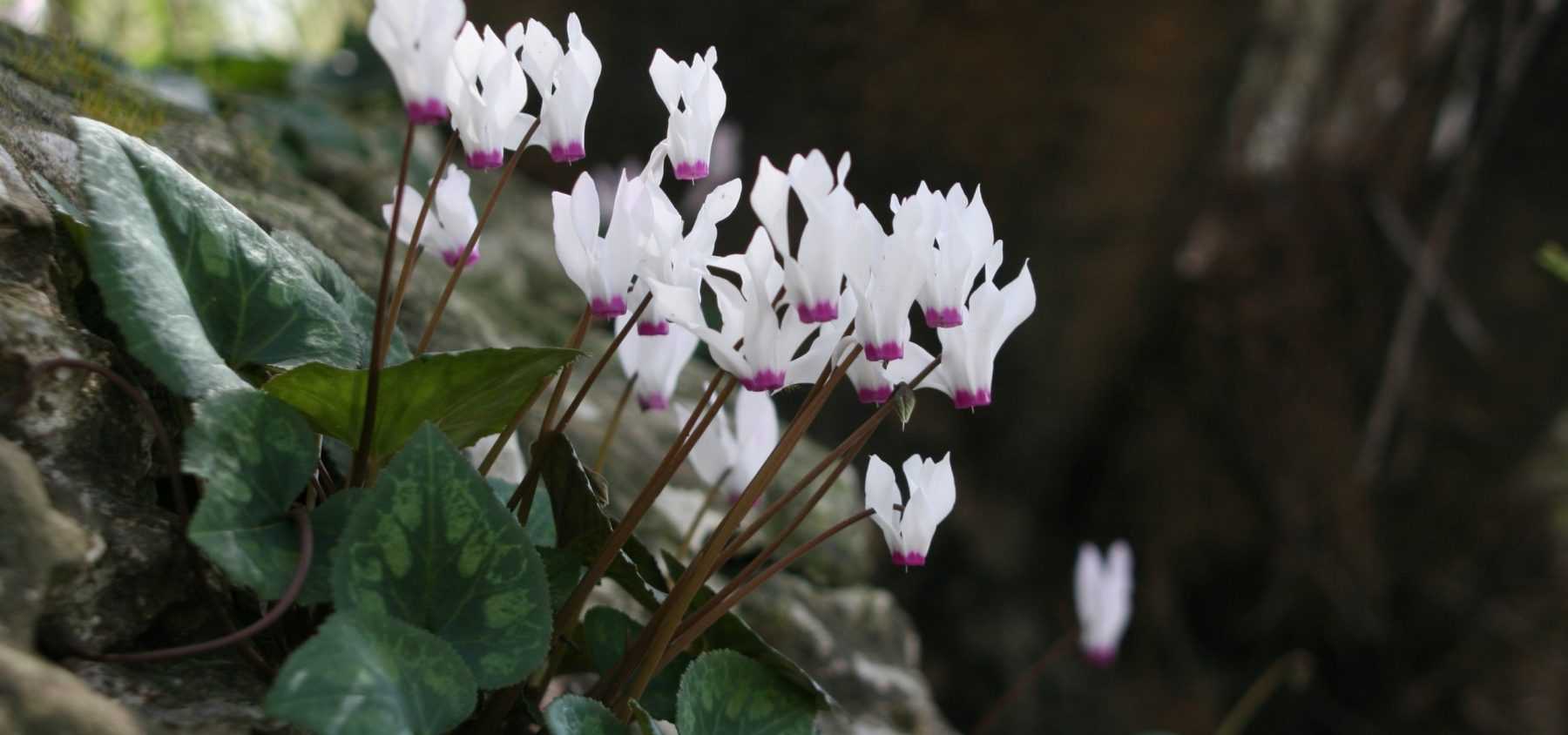
Cyclamens: Planting and Care
All our tips for successful cultivation
Contents
With their delicate flowers featuring reflexed petals and marbled foliage, cyclamen add a splash of colour and elegance to autumn and winter gardens. Easy to grow and exceptionally hardy, these tuberous perennials brighten up shady spots, whether in woodland settings, flower beds, rockeries or even containers.
Whether you choose the Neapolitan cyclamen, Cyclamen coum, or the Persian cyclamen, there are varieties to suit every preference. Discover in this article when, where and how to plant your cyclamen, along with all the tips for their care to enjoy long-lasting blooms, year after year!
Where to plant cyclamen?
Cyclamens are tuberous perennials perfect for brightening up shady areas. They thrive in the shade or partial shade of deciduous trees, in woodland settings, along borders, or at the base of hedges. Don’t hesitate to pair the Naples cyclamen (Cyclamen hederifolium), which blooms from late summer to autumn, with the Coum cyclamen (Cyclamen coum), flowering from winter to spring, for an almost continuous display from September to April.
Cyclamens tolerate dry shade under mature trees well, where few other plants survive. In fact, they are among the rare plants that can endure such challenging conditions without suffering. However, their preferred environment remains a cool, humus-rich woodland floor, where the soil stays moist without becoming waterlogged.
The Naples cyclamen and Coum cyclamen are hardy, withstanding frosts down to -15°C. In contrast, the florist’s cyclamen (Cyclamen persicum), which is not hardy, must be protected from cold.
Cyclamens adapt to various soil types but prefer light, fertile, well-drained soil. If your soil is too clay-heavy, lighten it with leaf mould or sand to prevent waterlogging, especially in winter.
Read also
How to sow cyclamen?When to plant cyclamen?
Cyclamens should be planted from July to October, ideally before the first blooms and cold weather begin. This period allows the tubers to establish strong roots in soil that is still warm.
How to plant cyclamen?
If the tuber is slightly wrinkled, soak it in lukewarm water for a few hours to allow it to plump up before planting. Here are the steps to follow:
- Dig a hole about 10 cm deep using a small trowel or transplanting spade.
- Place the tuber the right way up: the rounded side facing downwards and the flat, often slightly concave side upwards. On this upper side, you may sometimes see traces of previous growth.
- Cover with 3 to 5 cm of soil. Avoid planting too deeply, as this may make it difficult for the leaves and flowers to emerge.
- Water lightly to encourage root development.
Be patient: cyclamen can take several months to get started. Once established, it is very resilient and can even withstand dry spells thanks to the reserves in its tuber. It naturalises easily and can multiply over the years.
Don’t worry if the foliage disappears in summer: this is a natural dormant phase. It will reappear the following season.
How to care for cyclamen after planting?
Cyclamens require little maintenance once well established. Here are some simple steps to keep them in top condition:
- Watering: Water lightly during the growing season (autumn, winter, early spring), especially in dry spells. Allow the soil to dry out slightly between waterings. During dormancy (summer), stop watering unless there is prolonged drought.
- Mulching: Apply a light mulch of dead leaves or compost to keep the soil cool in summer and protect the tubers from winter frost.
- Cleaning: Regularly remove faded leaves and flowers by cutting them at the base to prevent disease and encourage new blooms.
- Fertiliser: A light application of compost or organic fertiliser in spring can boost growth, though it’s not essential if the soil is already rich.
Cyclamens are hardy, resilient plants that can withstand challenging conditions. Once established, they naturalise easily and return faithfully year after year.
To go further
- Subscribe!
- Contents

































